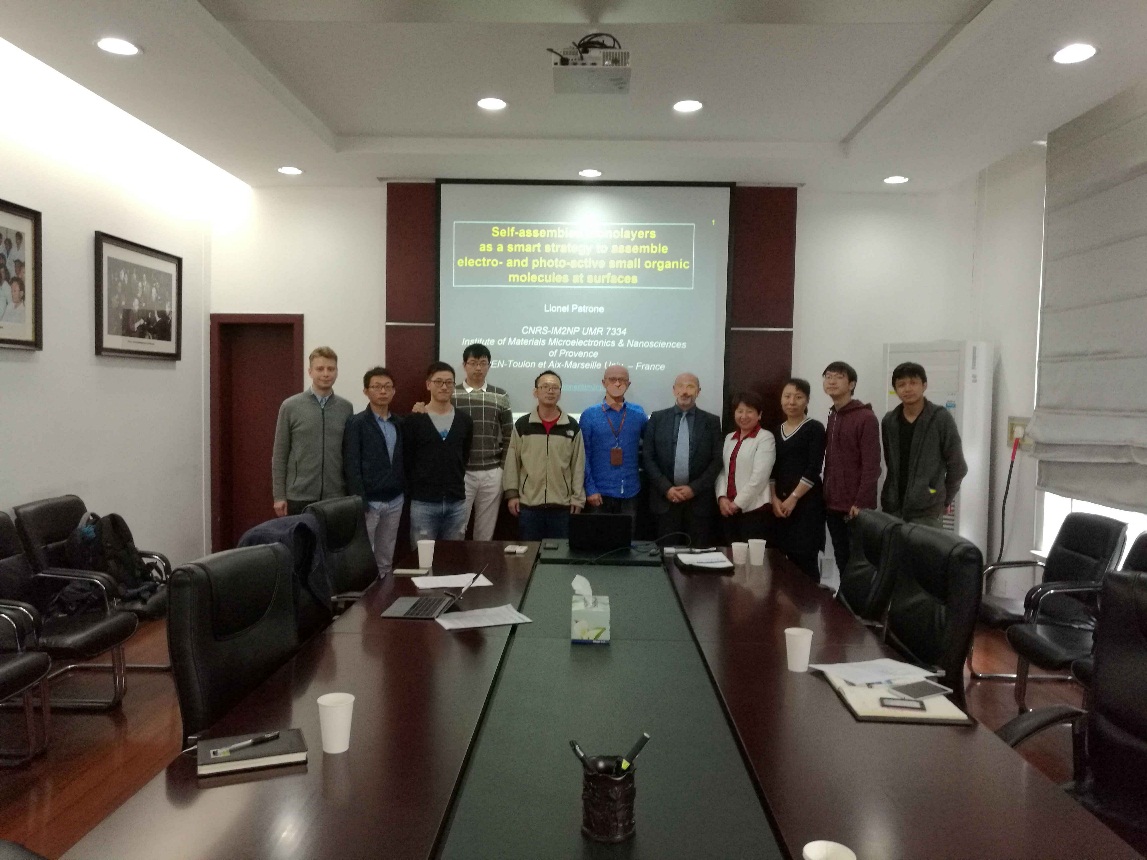On Oct. 16, 2017, Prof. Lionel Patrone from Institute of Materials, Microelectronics and Nanosciences in Provence ISEN-Toulon and Aix-Marseille University paid a visit to SIOM and delivered a presentation entitled by “Self-assembled monolayers as a smart strategy to assemble electro- and photo-active small organic molecules at surfaces”. The presentation was chaired by Prof. Jean-Michel Nunzi, PIFI Fellow, from Queen’s University, Canada. Dr. Ivan M. Kislyakov, PIFI Fellow, from ITMO University, Russia, and many young researchers and graduate students in SIOM attended this seminar.
In this talk, Prof. Lionel Patrone first gave a brief introduction on CNRS and Aix-Marseille University. And then he introduced the preparation principle of self-assembled monolayers (SAMs) and their applications. How organization at the molecular scale acts on electro-optical properties of molecular chromophores was then be discussed through two examples: a structure-electrical properties relationship probed by STM and the SAM of a novel push-pull thiophene-based chromophore. For the latter, dense SAM formation of such non-charged chromophore was for the first time clearly demonstrated by spectroscopy (XPS, UV-vis, IR), ellipsometry, scanning probe microscopy (STM, AFM), and electrochemical measurements. Besides, good film quality was highlighted and local I-V characteristics measured by STM exhibit electrical rectification. Such I-V curves were correlated to UPS (filled states) and IPES (empty states) measurements and were consistent with the structure of the SAM-organized push-pull molecules standing upright at the surface. This unique combination of properties makes such SAM a system of choice for the foreseen applications like in the field of PV energy conversion and optical rectenna.
Prof. Lionel Patrone is research scientist (physicist) at CNRS (French National Center for Scientific Research) since 2003. He is author or co-author of 44 scientific papers, ~130 conferences and communications. His research activity is mainly devoted to SAM structure-properties relationship, with particular expertise in scanning probe microscopy techniques. His current research interest is molecular electronics and optoelectronics based on self-assembled molecular nanostructures.

